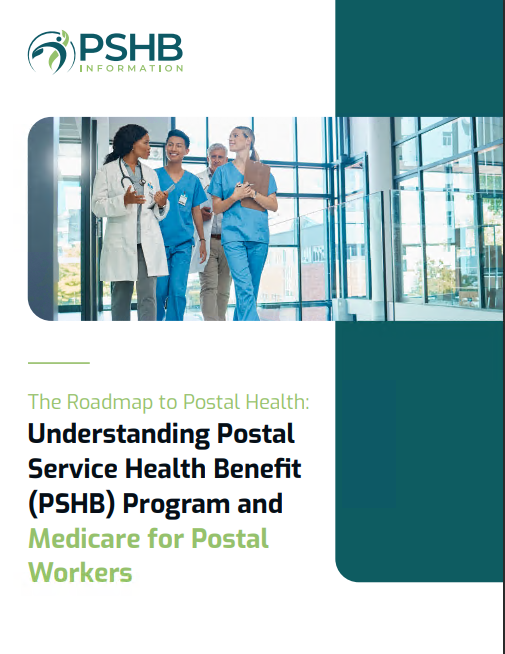Key Takeaways
-
Even with Postal Service Health Benefits (PSHB), retirees and employees might face unexpected Medicare expenses.
-
Understanding hidden costs like deductibles, copays, and medication expenses can help you plan your retirement budget better.
Medicare Expenses: More Than Meets the Eye
When you’re preparing to retire from the USPS or continuing your career, one thing you might not fully anticipate is how Medicare and your Postal Service Health Benefits (PSHB) coordinate. You might think your healthcare coverage will handle everything seamlessly, but every year thousands of USPS retirees are surprised by unexpected Medicare costs. Let’s talk about the three most common Medicare-related expenses that catch USPS employees and retirees off guard—and how to plan for them.
1. The Medicare Part B Premium
You probably know Medicare Part A (hospital insurance) usually doesn’t cost you a monthly premium if you’ve worked long enough. But here’s what many people overlook: Medicare Part B, which covers doctor visits, outpatient care, and medical supplies, isn’t free.
What You Might Not Expect:
-
For 2025, the standard Part B monthly premium is $185.
-
If your income exceeds certain thresholds, you’ll pay even more due to Income-Related Monthly Adjustment Amounts (IRMAA).
-
This premium isn’t included in your PSHB, so you must budget for it separately.
The big catch? PSHB often requires you to enroll in Medicare Part B to keep full coverage benefits once you’re eligible. Skipping enrollment could result in hefty coverage gaps or penalties down the road.
How to Prepare:
-
Factor this $185 monthly premium (or more, depending on your income) into your retirement budget.
-
Watch your income levels two years before enrolling since Medicare uses your Modified Adjusted Gross Income (MAGI) from that timeframe to determine your premium.
-
Consider adjusting retirement income strategies to stay below IRMAA thresholds if possible.
2. Prescription Drug Coverage (Part D)
Another common misconception among USPS employees and retirees involves prescription drug coverage. While PSHB integrates with Medicare effectively, prescription drug costs can still present unexpected challenges.
What You Might Not Expect:
-
Medicare Part D (prescription drug coverage) has its own separate deductible, which in 2025 can be as high as $590.
-
Although Medicare Part D now caps your yearly out-of-pocket medication costs at $2,000, that’s still a considerable expense.
-
Some medications might not be fully covered or could require you to pay substantial copays or coinsurance.
This means even if your PSHB covers medications, Medicare’s rules might still leave you paying more than anticipated, especially early in the year when you’re meeting your deductible.
How to Prepare:
-
Review your PSHB plan details closely during the annual Open Season (November 11 to December 13).
-
Make a detailed list of all medications you regularly take and check their coverage carefully within your Medicare and PSHB documents.
-
Consider Medicare’s Prescription Payment Plan option, allowing you to spread medication costs throughout the year.
3. Hidden Copays and Deductibles
Most USPS employees are accustomed to predictable copays under their current healthcare plans. However, transitioning to retirement and Medicare can introduce unexpected complexities.
What You Might Not Expect:
-
PSHB plans often have separate deductibles and copays for services that Medicare does not fully cover.
-
For instance, specialist visits or diagnostic tests like MRIs and CT scans might have significant out-of-pocket expenses.
-
Emergency visits can cost anywhere from $100 to $150 per visit, depending on your PSHB selection.
These hidden costs can quickly add up, especially if you have ongoing medical conditions requiring frequent specialist visits or regular diagnostic imaging.
How to Prepare:
-
Closely review PSHB plan brochures during Open Season to understand exact deductible and copay amounts.
-
Set aside a healthcare emergency fund specifically designed to cover unexpected costs like diagnostic tests, specialist visits, or urgent care trips.
-
If eligible, consider leveraging Health Savings Accounts (HSAs) or Flexible Spending Accounts (FSAs) during your employment years to build a medical cost cushion.
Planning Your Healthcare Budget Wisely
It’s crucial to approach your retirement healthcare planning with a comprehensive understanding of how Medicare integrates with your PSHB. Being informed about potential surprises helps you avoid financial stress later.
Smart Steps to Take Now:
-
Attend Retirement Planning Workshops: The USPS frequently offers seminars focusing on healthcare coverage and Medicare integration—take advantage of these.
-
Speak to a Licensed Agent: Professional guidance can clarify confusing details about Medicare enrollment, helping you avoid common pitfalls.
-
Budget Conservatively: Always plan for the highest potential costs rather than best-case scenarios.
How PSHB Helps Mitigate Medicare Costs
While it’s true that Medicare can introduce unexpected costs, the Postal Service Health Benefits program also provides notable benefits designed to ease your healthcare expenses, especially when combined with Medicare Part B.
Advantages of PSHB:
-
Reduced or waived deductibles and copays for Medicare Part B enrollees.
-
Lower coinsurance rates for in-network care, typically ranging from 10% to 30%, compared to 40%-50% out-of-network.
-
Automatic enrollment in a Medicare Part D Employer Group Waiver Plan (EGWP), simplifying prescription drug coverage.
Understanding these advantages allows you to leverage PSHB strategically, potentially saving thousands of dollars throughout your retirement.
Avoid Costly Medicare Enrollment Mistakes
Missing key enrollment deadlines or failing to coordinate your PSHB correctly with Medicare can trigger irreversible penalties and long-term financial consequences.
Deadlines to Keep in Mind:
-
Initial Enrollment Period (IEP): Starts three months before your 65th birthday month and continues three months after.
-
General Enrollment Period (GEP): If you miss your initial window, you must wait until January 1 to March 31, with coverage not starting until July 1—and you may incur penalties.
-
Special Enrollment Period (SEP): Triggered by events like retirement from USPS; it lasts eight months but enrolling immediately upon retirement is best to avoid coverage gaps.
Always mark these critical dates clearly on your calendar to ensure you don’t miss them.
Protecting Your Financial Health in Retirement
Healthcare costs can significantly impact your retirement quality of life. By knowing what to expect, you can safeguard your financial health and avoid unwelcome surprises that could derail your retirement plans.
Consider These Financial Safeguards:
-
Comprehensive Budgeting: Include Medicare premiums, prescription drug costs, copays, and deductibles explicitly in your monthly budget.
-
Regularly Review Coverage: Use the annual Open Season period to reassess your healthcare needs and adjust your PSHB selections accordingly.
-
Emergency Savings: Maintain a dedicated fund for unexpected healthcare expenses—ideally equivalent to 6-12 months of anticipated medical costs.
Expert Advice Makes a Difference
Navigating Medicare and PSHB intricacies can feel overwhelming, but you don’t have to do it alone. Reach out to a licensed agent listed on this website for professional advice tailored specifically for USPS employees and retirees. They can help you prepare confidently for these often-overlooked healthcare expenses.








